Stellen Sie sich vor: Sie haben sich in den charmanten, verwinkelten Gassen von Prag verirrt. Die Karte auf Ihrem Handy lädt nicht, die Übersetzungs-App ist offline, das nächste Café mit kostenlosem WLAN ist ein Rätsel – und das alles nur, weil Sie kein Pocket WiFi dabei haben. Heutzutage ist eine zuverlässige Internetverbindung eine Notwendigkeit, auf die wir uns für fast alles verlassen.
In diesem Leitfaden werden wir die tatsächliche Leistung von Pocket-WiFi-Geräten in Europa analysieren, die unausgesprochenen Tücken aufdecken und Ihnen helfen zu verstehen, ob diese Technologie die richtige für Sie ist.
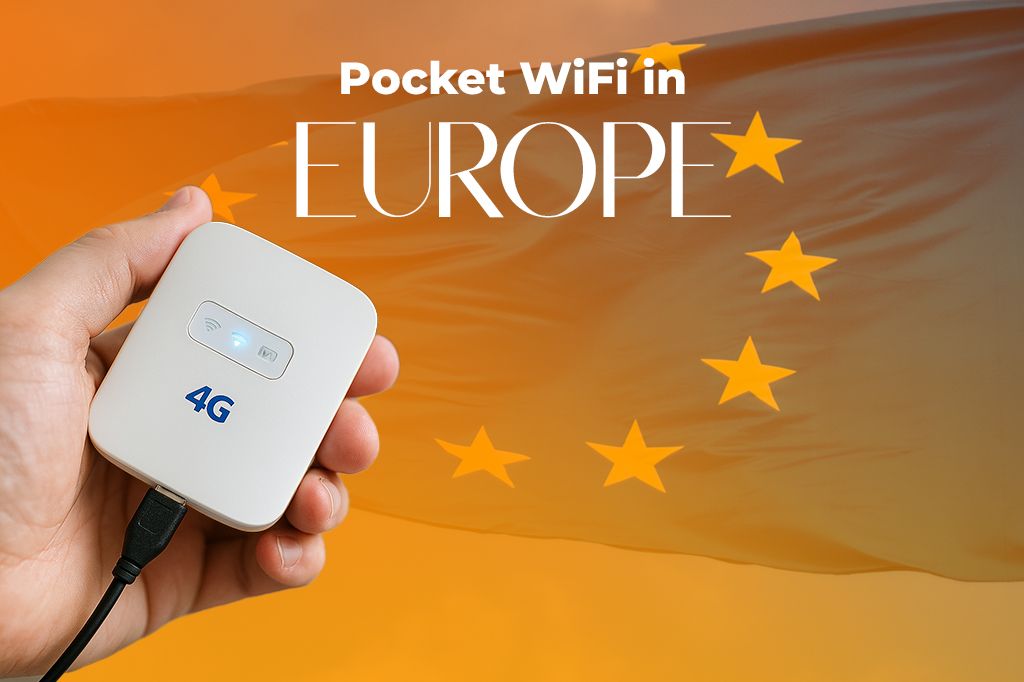
Foto von Christian Lue auf Unsplash
Pocket WiFi: Was es ist und was nicht
Was genau ist ein Pocket-WiFi-Gerät? Einfach ausgedrückt ist es wie ein persönlicher Hotspot, aber in einem separaten, dedizierten Gerät. Es ist eine kleine, batteriebetriebene Box, die eine SIM-Karte aufnimmt und ein privates WLAN-Netzwerk nur für Sie aussendet. Sie können Ihr Telefon, Ihren Laptop und Ihr Tablet gleichzeitig damit verbinden.
Die meisten Reisenden mieten ein Pocket WiFi für Europa, anstatt eines zu kaufen. Warum? Mieten ist weitaus praktischer. Vermietungsfirmen kümmern sich um alles für Sie: Sie stellen sicher, dass das Gerät die richtigen SIM-Karten für die von Ihnen besuchten Länder hat, aktualisieren die Technologie regelmäßig und bieten auf Reisen zugeschnittene Tarife an. Wenn Sie ein Gerät kaufen, sind Sie daran gebunden, und es könnte veraltet oder mit Netzwerken in anderen Teilen der Welt inkompatibel werden. Mieten ist für eine Reise einfach unkomplizierter und kostengünstiger.
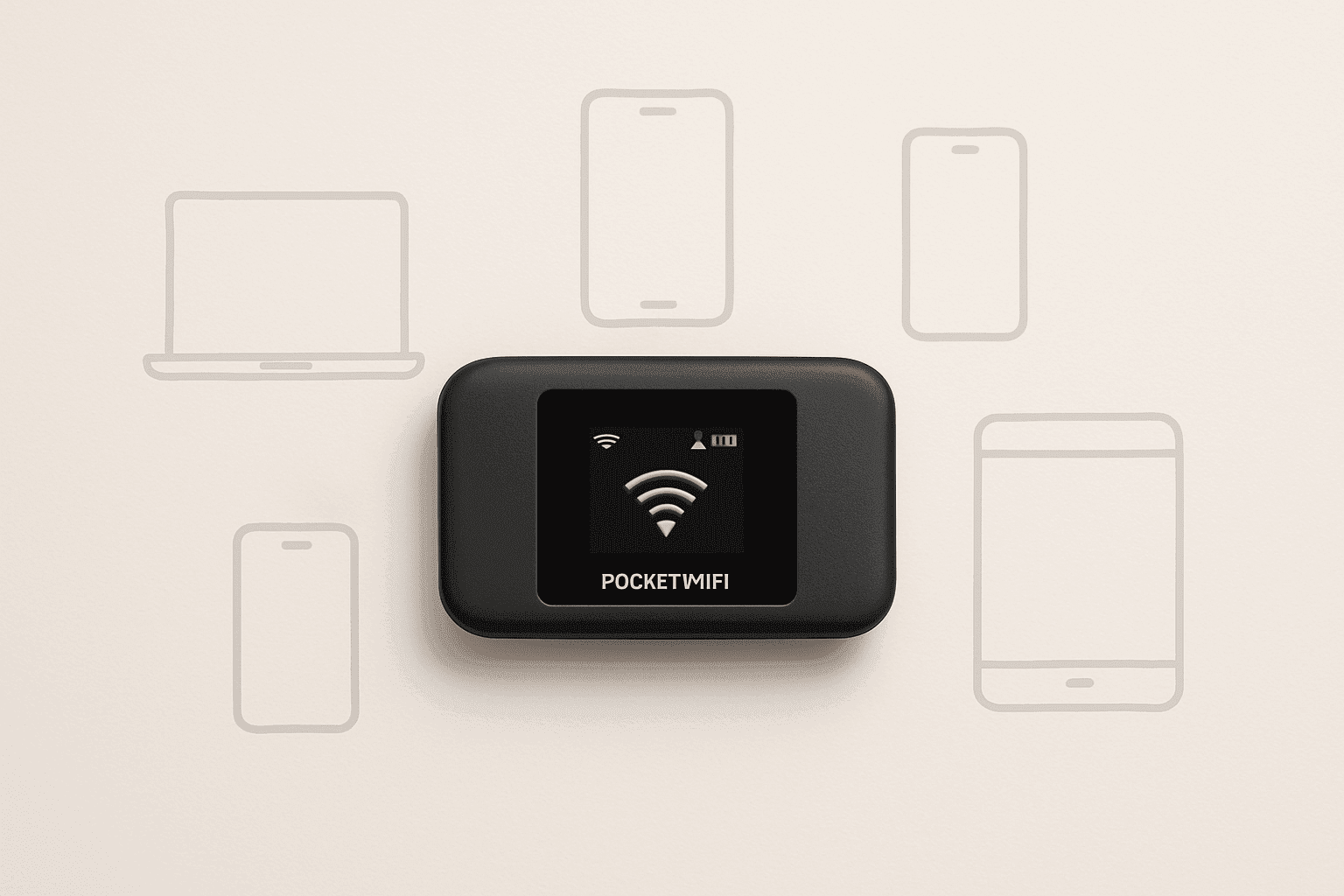
Die regionalen Realitäten Europas, die alles verändern
Einer der größten Fehler, den Reisende machen, ist die Annahme, dass „Europa“ eine einzige Einheit ist, wenn es um mobiles Internet geht. Ein Gerät, das in Paris perfekt funktioniert, kann in den malerischen Schweizer Alpen ein Briefbeschwerer sein. Zum Beispiel haben große Städte wie London, Rom und Berlin in der Regel eine ausgezeichnete 4G- oder sogar 5G-Abdeckung. Aber wagen Sie sich in die Berge Österreichs, an die entlegenen Küsten Griechenlands oder in die ländlichen Gegenden Spaniens, und dieses starke Signal kann verschwinden. Anbieter verlassen sich oft auf verschiedene lokale Netzwerke, und einige sind in ländlichen Gebieten einfach besser als andere.
Außerdem ist es in einigen Ländern ein bürokratischer Aufwand, eine lokale SIM-Karte zu bekommen. Länder wie die Schweiz und Ungarn haben strenge Registrierungsgesetze, die verlangen können, dass Sie Ihren Reisepass vorlegen und Formulare ausfüllen. Ein vorkonfiguriertes Pocket WiFi für Europa von einem Mietservice lässt Sie diesen Prozess komplett umgehen. Es ist sofort einsatzbereit, sobald Sie landen.
Hier ist ein seltsames, aber wahres Phänomen: Sie könnten blitzschnelles Glasfaser-Internet in einem kleinen rumänischen Dorf finden, aber Schwierigkeiten haben, ein nutzbares 4G-Signal in der Nähe des Kolosseums in Rom zu bekommen. Warum? Beliebte Touristenorte sind oft überfüllt mit Menschen, die alle versuchen, dieselben Mobilfunkmasten zu nutzen. Diese Überlastung kann die Geschwindigkeiten auf ein Kriechtempo verlangsamen. In solchen Fällen kann ein Pocket-WiFi-Gerät, das sich möglicherweise mit einem weniger überlasteten Netzwerk verbindet, manchmal eine stabilere Verbindung bieten.
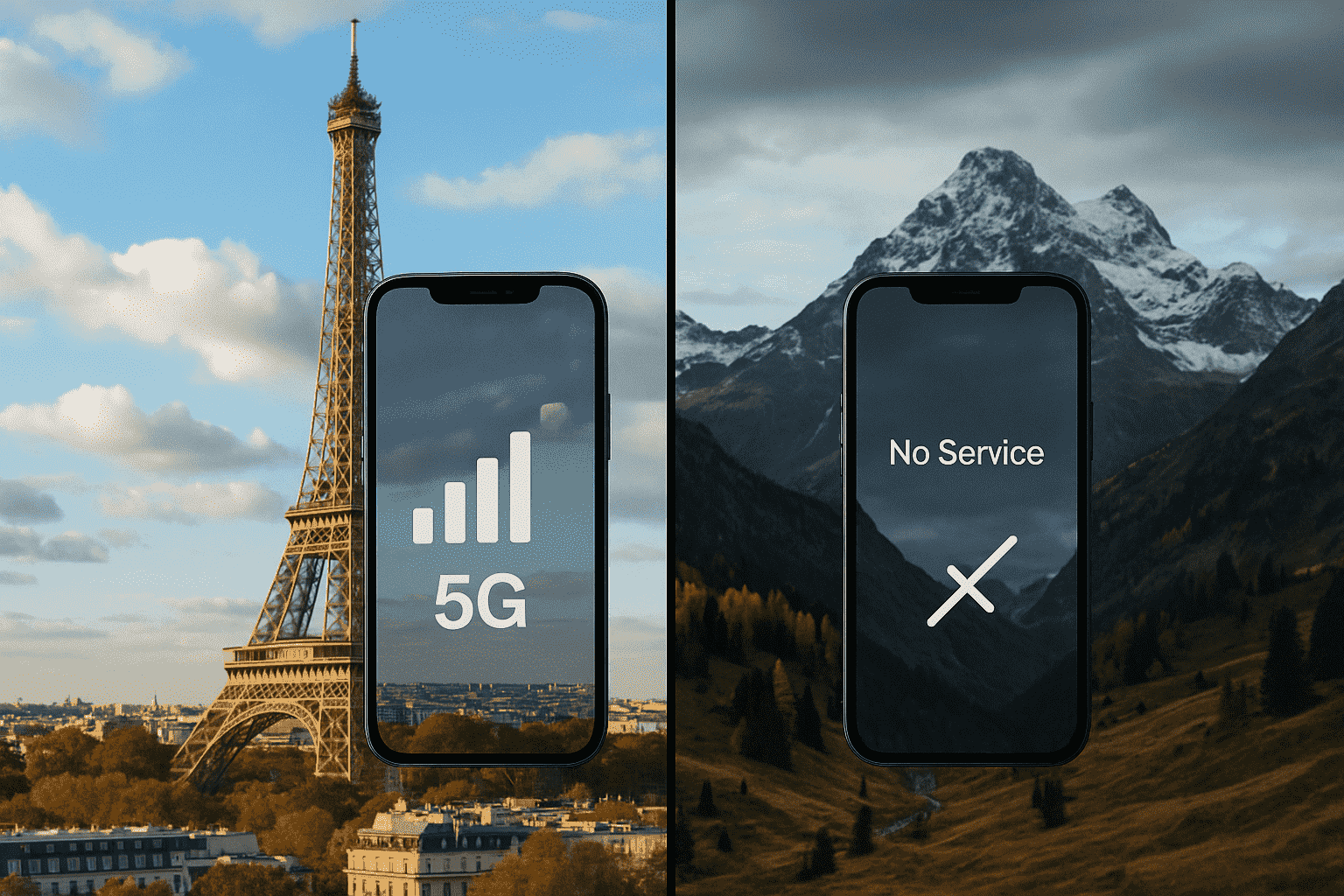
Die besten (und schlechtesten) Pocket-WiFi-Anbieter
Die Wahl eines Anbieters kann bei so vielen Optionen überwältigend sein. Wir haben die Marketingversprechen hinter uns gelassen, um Ihnen einen klaren Überblick über die beliebtesten Optionen zu geben, einschließlich einiger versteckter Juwelen.
-
Cello Mobile: Dies wird oft als die Premium-Option angesehen. Es ist zuverlässig und bietet einen hervorragenden Kundenservice, hat aber auch einen höheren Preis. Es richtet sich hauptsächlich an US-Reisende und ist eine beliebte Wahl für Geschäftskunden, die eine absolut stabile Verbindung benötigen und die Kosten nicht scheuen. Wie ein Yelp-Nutzer es ausdrückt: „Haben es für unsere 15-tägige Reise nach Italien und Griechenland genutzt - es war wunderbar…“.
-
TravelWiFi: Eine sehr beliebte Wahl für kurzfristige Europa-Urlaube. TravelWiFi bietet flexible Tarife, transparente Preise und den Komfort von Abhol- und Abgabestellen an Flughäfen in großen Drehkreuzen. Es ist eine solide, benutzerfreundliche Option für einen ein- oder zweiwöchigen Europatrip. Auf Reddit kommentierte ein Nutzer: „Ich habe Travel WiFi in Frankreich benutzt und es war großartig. Das ist jetzt allerdings schon ein paar Jahre her. Aber wir haben vereinbart, den Hotspot am Flughafen abzuholen, und es war einfach, ihn auf dem Weg zum Flughafen bei unserer Abreise in einen Briefkasten zu werfen.“
-
My Webspot: Wenn Sie eine längere Reise planen (einen Monat oder länger), bietet My Webspot oft das beste Preis-Leistungs-Verhältnis. Sie sind auf eine starke EU-weite Abdeckung spezialisiert und bieten Tarife an, die umso kostengünstiger werden, je länger Sie mieten. Ihr Service ist für seine Zuverlässigkeit in mehreren Ländern bekannt. Dieser Nutzer kommentierte zur Zuverlässigkeit bei einer Rückerstattungsanfrage: „Alles hat perfekt geklappt. Wir mussten unsere Bestellung leider kurzfristig stornieren, aber der Kundenservice war sehr hilfsbereit und hat schnell reagiert. Die Rückerstattung kam innerhalb eines Tages an!“
Versteckte Akteure: Viele Ratgeber übersehen fantastische regionale Anbieter. Unternehmen wie HippocketWiFi (stark in Frankreich und den umliegenden Gebieten), Rent ‘n Connect (ideal für die Türkei und Osteuropa) und Alldaywifi (ein starker Konkurrent in Spanien) können wettbewerbsfähige Preise und einen ausgezeichneten lokalen Service bieten.
| Anbieter | 7-Tage-Miete | Monatliche Miete | Versteckte Gebühren, auf die man achten sollte |
|---|---|---|---|
| Cello Mobile | ~350 $ | ~1500 $ | Hohe Kaution, teure Versicherung. |
| TravelWiFi | ~70 $ | ~299 $ | Flughafenabholgebühren, strenge Strafen bei verspäteter Rückgabe. |
| My Webspot | ~87 $ | ~318 $ | Versandkosten, optionale Versicherung kostet extra. |
Die unsichtbaren Kosten: Was die meisten verschweigen
Der Preis auf der Website ist selten der Endpreis, den Sie zahlen. Hier sind die versteckten Kosten und Ärgernisse, die Sie kennen sollten:
-
Akkulaufzeit: Eine angegebene Akkulaufzeit von 8 Stunden bedeutet in der Praxis oft nur 5-6 Stunden. Das heißt, Sie müssen eine Powerbank und ein zusätzliches Kabel mit sich führen, nur um Ihr Internet den ganzen Tag am Laufen zu halten. Das bedeutet zusätzliches Gewicht und Aufwand für Ihren Tagesrucksack.
-
Versicherungs-Illusionen: Die „optionale“ Versicherung für 15 $ mag wie eine einfache Möglichkeit erscheinen, Geld zu sparen. Aber wenn Sie das Gerät verlieren oder beschädigen, kann die Ersatzgebühr 200 $ oder mehr betragen. Wenn Sie ungeschickt sind oder mit Kindern reisen, lohnt sich die Versicherung fast immer.
-
Versandpannen: Sich das Gerät in ein Hotel oder Airbnb liefern zu lassen, klingt praktisch, kann aber eine Fehlerquelle sein. Pakete gehen verloren, Rezeptionen verlegen sie oder Lieferungen verzögern sich. Eine fehlgeschlagene Lieferung kann dazu führen, dass Sie in den ersten kritischen Tagen Ihrer Reise ohne Internet dastehen.
-
Roaming vs. lokales Routing: Dies ist ein technischer, aber entscheidender Punkt. Einige Anbieter leiten Ihren Internetverkehr den ganzen Weg zurück in ihr Heimatland (z. B. die USA), bevor er ins Web gesendet wird. Dies führt zu einer massiven Verzögerung (Lag). Ein guter Pocket-WiFi-Dienst für Europa verwendet lokales Routing, wodurch Ihre Verbindung schnell und reaktionsschnell bleibt.
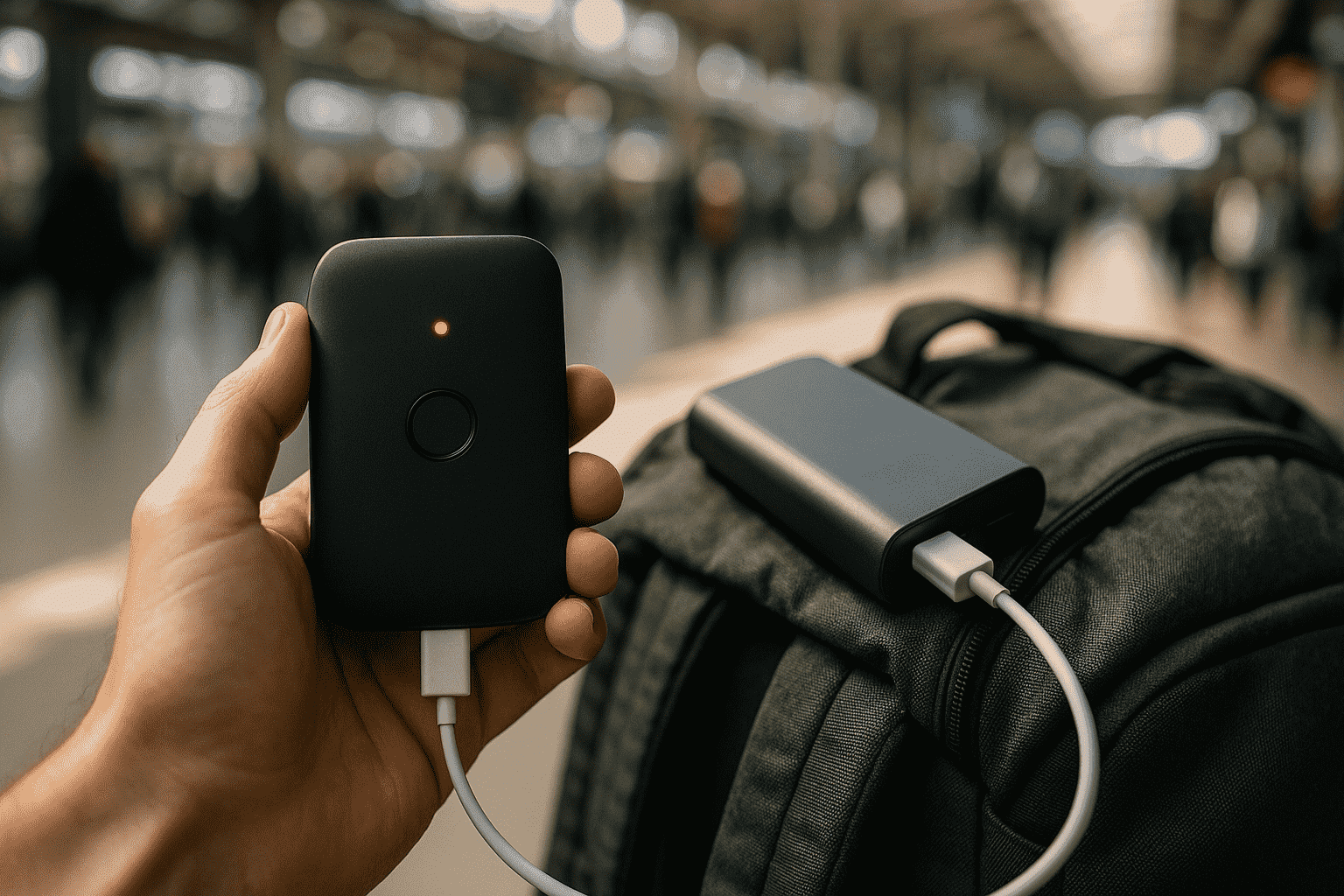
Die Alternative, die Pocket WiFi schlägt: eSIMs
Für den modernen Reisenden gibt es eine einfachere, intelligentere und oft günstigere Alternative. Eine eSIM ist eine eingebettete (oder elektronische) SIM-Karte, die bereits in den meisten neueren Smartphones integriert ist. Es gibt kein winziges Plastikteil, das ausgetauscht werden muss. Um eine Verbindung herzustellen, scannen Sie einfach einen QR-Code mit der Kamera Ihres Telefons, und Ihr Reisedatentarif wird sofort installiert. Aber warum sind eSIMs die intelligentere Wahl für die meisten Reisenden?
- Sofortige Einrichtung, überall: Landen Sie in Rom, scannen Sie einen Code, und Sie sind in Sekunden online.
- Keine zusätzliche Hardware: Ein Gerät weniger, das Sie verlieren, aufladen oder versichern müssen.
- Wettbewerbsfähige Preise: Anbieter wie Yoho Mobile bieten Tarife ab 5–10 $ für Basisdaten in Europa an.
- Funktioniert grenzüberschreitend: Viele Tarife sind EU-weit gültig, ohne dass pro Land die SIM-Karte gewechselt werden muss.
- Dual-SIM-Unterstützung: Behalten Sie Ihre Heimatnummer aktiv, während Sie einen Reisedatentarif nutzen.
Wenn Sie sich immer noch unsicher sind, auf eSIM umzusteigen, bietet Yoho Mobile eine kostenlose eSIM-Testversion an, keine Kreditkarte erforderlich, keine Verpflichtungen. Und wenn Sie danach Ihren eSIM-Tarif kaufen möchten, verwenden Sie den Code YOHO12 an der Kasse für 12 % Rabatt!
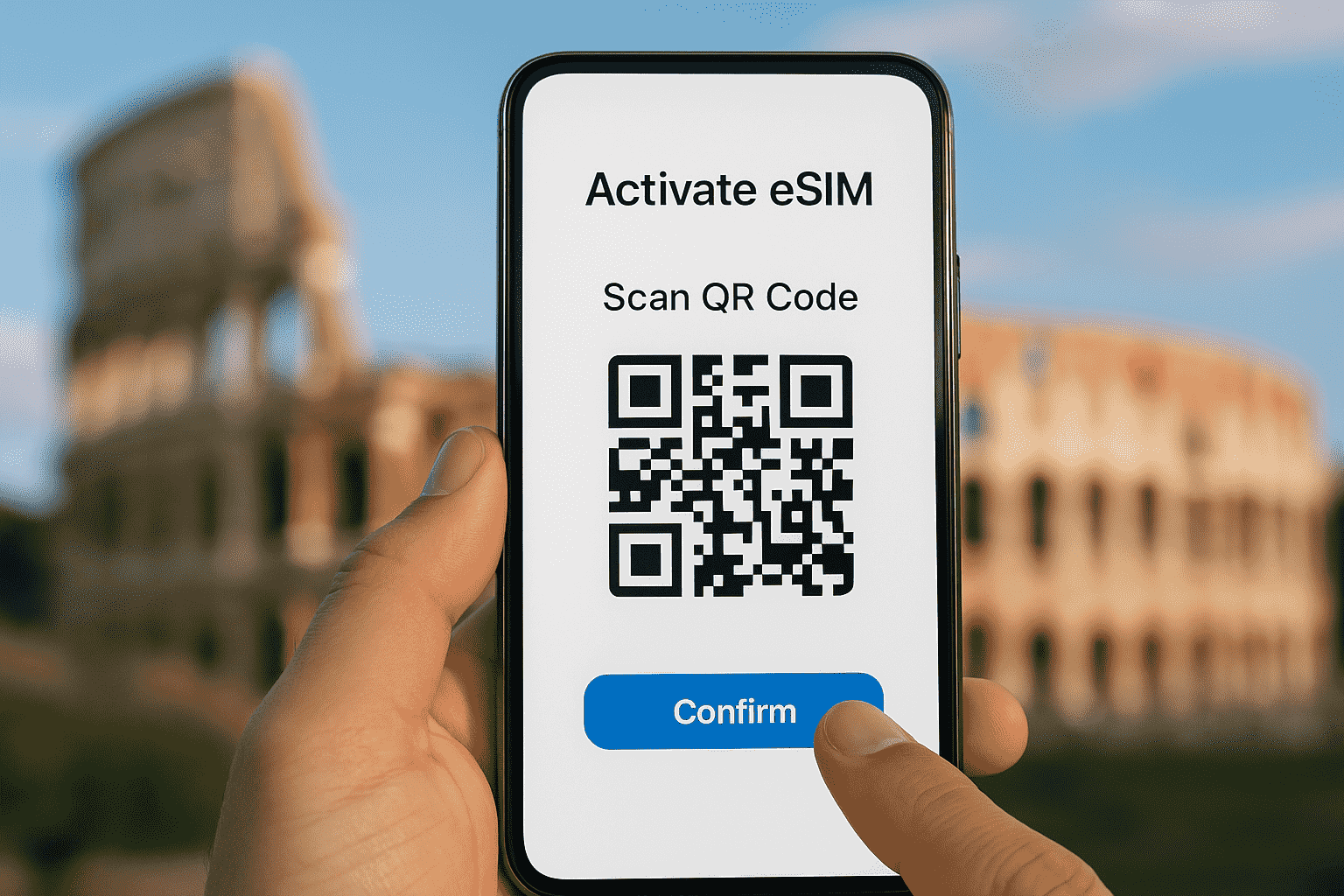
Mythen über Pocket WiFi
Lassen Sie uns mit einigen gängigen Missverständnissen über Pocket WiFi aufräumen.
„Unbegrenzte Daten bedeuten, dass ich den ganzen Tag Netflix streamen kann.“ Fast jeder „unbegrenzte“ Tarif hat eine Fair-Use-Richtlinie. Nachdem Sie eine bestimmte Datenmenge verbraucht haben (normalerweise 2-5 GB pro Tag), wird Ihr Anbieter Ihre Geschwindigkeit drastisch drosseln. Es ist unbegrenzt zum Überprüfen von Karten und E-Mails, aber nicht zum Binge-Watching Ihrer Lieblingsserie in 4K.
„Es ist ein Gerät für die ganze Familie.“ Sie können zwar mehrere Geräte verbinden, aber es ist, als würde man sich eine einzige Internetleitung teilen. Je mehr Personen sich verbinden, desto langsamer wird die Geschwindigkeit für alle. Für ein Paar zur grundlegenden Navigation ist es in Ordnung, aber eine vierköpfige Familie, die alle versucht, Videos anzusehen oder Videoanrufe zu tätigen, wird es als quälend langsam empfinden.
„Man kann es überall in Europa nutzen.“ Lesen Sie immer das Kleingedruckte! „Europa“ schließt nicht immer Nicht-EU-Länder wie die Schweiz, Norwegen, das Vereinigte Königreich (nach dem Brexit) oder Balkanstaaten ein. Einige Anbieter verlangen für diese Ziele zusätzliche Gebühren oder bieten gar keine Abdeckung. Überprüfen Sie immer die spezifische Länderliste, bevor Sie mieten.
Jetzt haben Sie das vollständige Bild. Sie verstehen die Technologie, die Vor- und Nachteile sowie die intelligenteren Alternativen. Sie können eine fundierte Entscheidung treffen, um sicherzustellen, dass Sie intelligent reisen und auf Ihrem europäischen Abenteuer mühelos verbunden bleiben.
